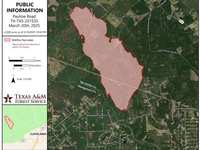- Sections :
- Crime & Public Safety
- Restaurants & Food
- Sports
- More
What you need to know about Wednesday’s FEMA / FCC public alert test

THE WOODLANDS, TX – On Wednesday, October 4 at around 1:20 p.m. locally for a half hour or so, FEMA and the Federal Communications Commission (FCC) will conduct the 2023 IPAWS National Test. This Integrated Public Alert and Warning Systems test will consist of tests of the Emergency Alert System (EAS) and Wireless Emergency Alerts (WEA) on phones, televisions, radios, and other information-dissemination devices.
Antwane Johnson, FEMA Integrated Public Alert and Warning System Director, and Austin Randazzo, FCC Associate Chief, Public Safety and Homeland Security Bureau, provided the media with a conference call that answered questions and provided details of the test.
The national test is designed to help ensure that WEAs and the EAS continue to be effective ways to warn the public about emergencies, particularly those on the national level. All major U.S. wireless providers participate in Wireless Emergency Alerts and will transmit the national test to their subscribers.
If your mobile phone is on and within range of an active cell tower from a participating wireless provider, you should receive the national test. Wireless providers will transmit the national test for 30 minutes, but your phone should only receive it once. If you turn off your phone or put it in airplane mode, you won’t receive the test. The test won’t affect your devices being connected to wifi networks.
Wireless Emergency Alerts are short emergency messages from authorized federal, state, local, tribal and territorial public alerting authorities that can be broadcast from cell towers to any WEA?enabled mobile device in a locally targeted area. Types of Wireless Emergency Alerts include Presidential Alerts only sent during a national emergency; Imminent Threat Alerts of natural or human-made disasters, extreme weather, active shooters, and other threatening emergencies that are current or emerging; Public Safety Alerts that contain information about a threat that may not be imminent or after an imminent threat has occurred; and America’s Missing: Broadcast Emergency Response (AMBER) Alerts that are urgent bulletins issued in child-abduction cases.
If you are on a phone call when a WEA is sent in your area, the message will be delayed until you finish your call. WEAs do not track your location. They are broadcast from area cell towers to mobile phones within the defined geographic location. Every WEA-capable phone within range receives the message.

















